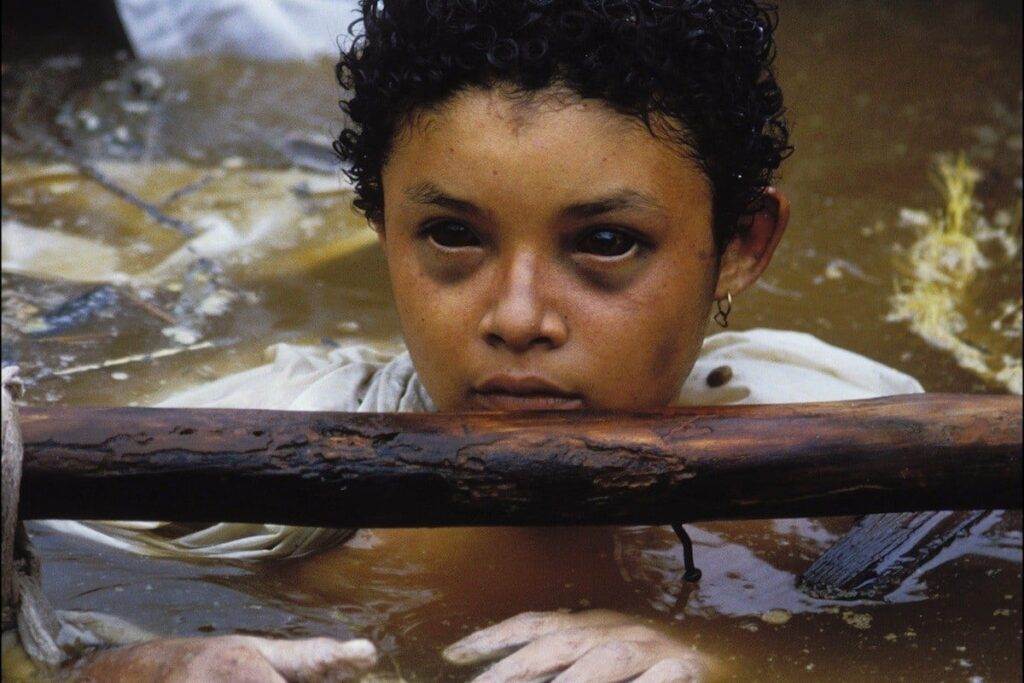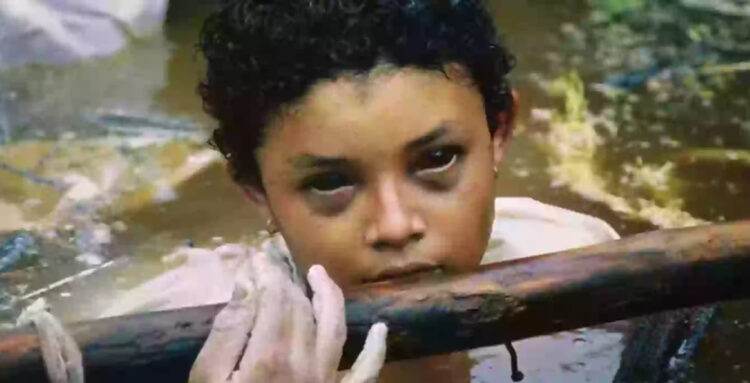Omayra Sánchez’s final moments became one of the most haunting images of tragedy. In 1985, after the Nevado del Ruiz volcano erupted, she got trapped under the rubble of her home, stuck in water and debris for days.
Photojournalist Frank Fournier captured her face — exhausted, in pain, yet unbelievably strong. Her image spread everywhere, forcing people to confront hard questions about government failure, media responsibility, and the power of a single photograph.
The Nevado del Ruiz eruption took thousands of lives
On November 13, 1985, the volcano erupted and caused devastation. It killed around 22,000 people, including Omayra. She was one of the many victims of the eruption of the Nevado del Ruiz volcano, which wiped out towns like Armero and Chinchiná.
The town of Armero, with almost 29,000 people, lost about 20,000 of its residents. The death toll eventually climbed to 23,000.
Scientists had warned the government, but no action was taken
Experts saw it coming. Only two months before, volcanologists had warned the government about the eruption and advised evacuating the area.
“There were no evacuation plans, yet scientists had foreseen the catastrophic extent of the volcano’s eruption,” Fournier said.
A powerful mudflow buried the town in minutes
For nearly 70 years, the volcano had been quiet. Then, out of nowhere, it erupted. The eruption melted glaciers, and those melting glaciers caused massive mudflows that quickly wiped out whole towns.
This type of mudflow, called a “lahar,” was a deadly mix of ash, water, and debris that came down the mountain.
Omayra was trapped in debris and volcanic sludge
At just 13 years old, Omayra was trapped under the debris of her collapsed home. Her legs were stuck in thick, muddy water.
Rescuers tried to get to her, but they didn’t have the right tools to free her. Despite all their efforts, she couldn’t be saved.
Rescuers tried to comfort her in her final hours
They did what they could to make her feel a bit better, but nothing could change the situation.
The rescuers even placed a tire around her to help her float and brought her some sweets and drinks.
Her eyes turned black as she neared death

As the hours passed, things got worse. The pressure from the debris and the water left her with eyes that turned black.
People think this happened because she was submerged in water for so long and because of the pressure on her body from the rubble.
She faced death with bravery and heartbreaking words
Even as she knew her time was running out, she stayed strong. “When I took the pictures, I felt totally powerless in front of this little girl, who was facing death with courage and dignity,” Fournier recalled.
Before she passed, Omayra said: “Mommy, I love you so much, daddy I love you, brother I love you.”
After her death, the full horror of her entrapment was revealed

She fought for three days, but in the end, she couldn’t make it. “She was in a large puddle, trapped from the waist down by concrete and other debris from the collapsed houses. She had been there for almost three days,” Fournier said.
She was in pain, confused, and surrounded by so many others in the same situation. The scene was haunting, with people screaming for help and then… nothing but silence.
Sadly, Omayra died on November 16, three days after the eruption. It’s believed she died from hypothermia or gangrene. Later, when divers investigated the scene, they discovered that her legs were trapped under the roof of her house, and her deceased aunt’s arms were holding onto her legs.
The haunting photograph sparked worldwide debate
The photo of Omayra became a symbol of the tragedy, and people all over the world couldn’t stop talking about it. “There was an outcry – debates on television on the nature of the photojournalist, how much he or she is a vulture.”
Omayra’s story remains a painful reminder of human resilience

Her story didn’t just stay in Colombia; it traveled the world. “It was the voice of an ordinary little girl who will cross land and time, and will bounce and pierce the heart of millions of people,” Fournier said.
The photo also helped raise money for disaster relief and drew attention to the government’s lack of action in handling the crisis.
“I believe the photo helped raise money from around the world in aid and helped highlight the irresponsibility and lack of courage of the country’s leaders,” Fournier concluded.
No matter how much time passes, Omayra’s story is impossible to forget.

















































